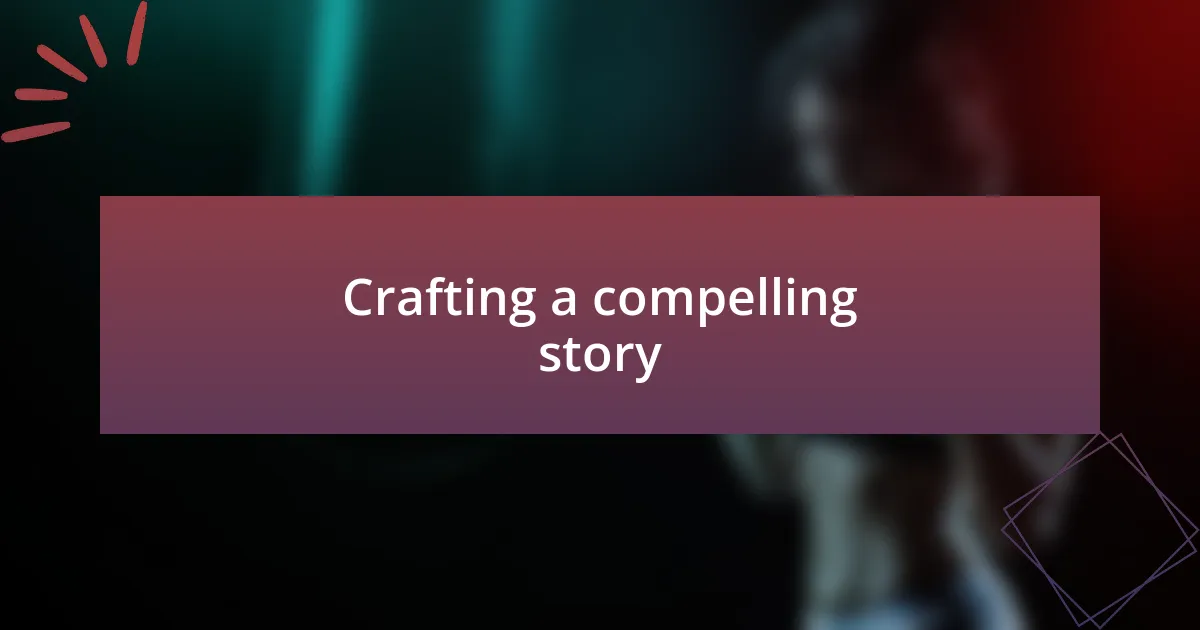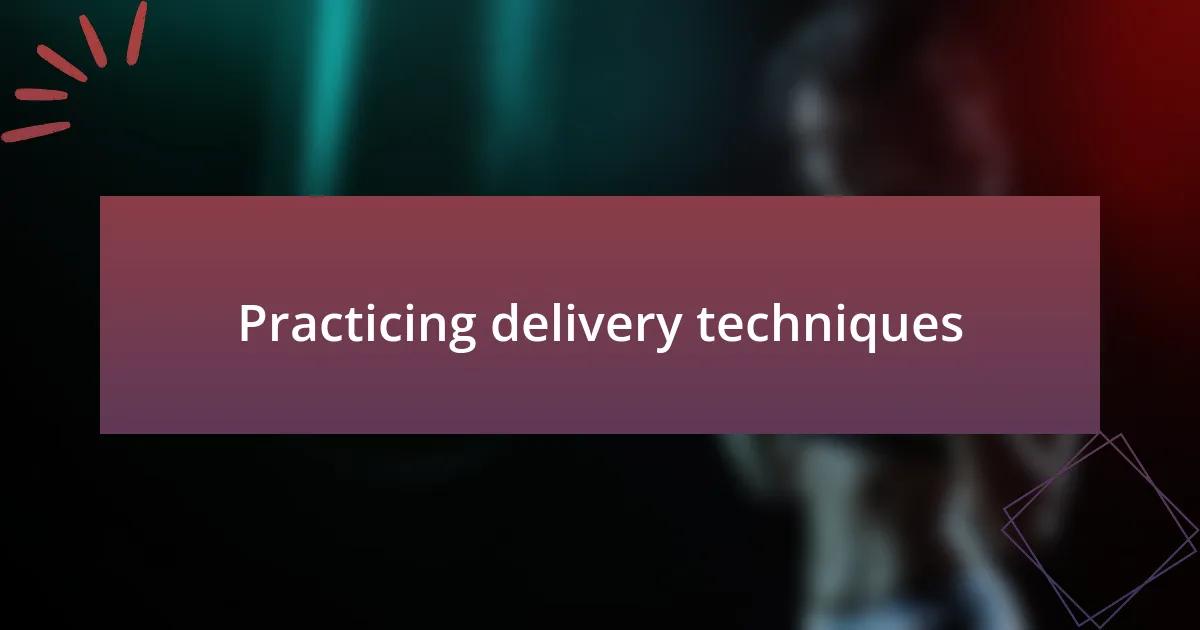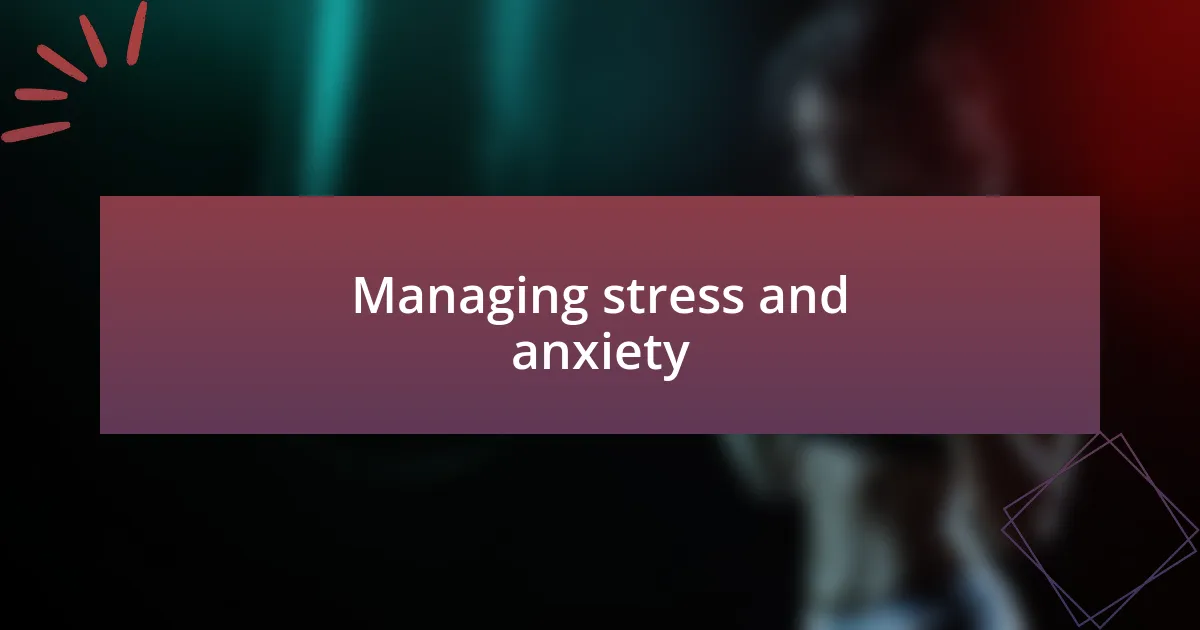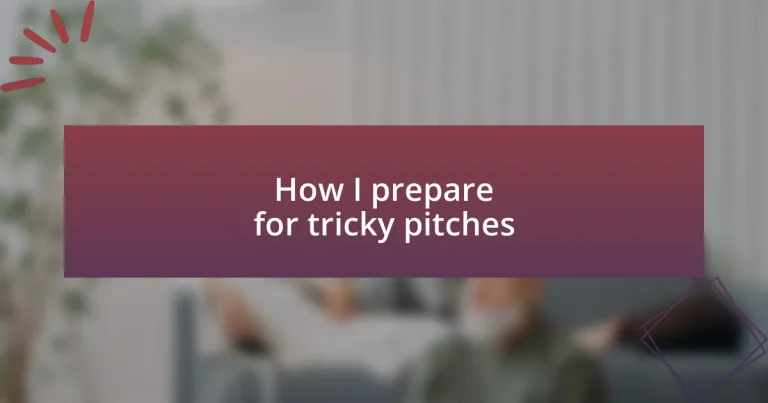Key takeaways:
- Understanding your audience’s needs and challenges significantly enhances the effectiveness of your pitch.
- Researching the competition allows you to position your offering as unique and valuable by addressing market gaps.
- Crafting a compelling story makes your presentation relatable and engaging, helping to connect with the audience emotionally.
- Following up after a pitch strengthens relationships and demonstrates professionalism, potentially leading to future opportunities.

Understanding your audience
Understanding your audience is crucial in any pitch. I remember preparing for a pitch to a tech company, where I realized they were more interested in data security than flashy features. This insight shaped my entire presentation and made it resonate well with them.
When I tailor my message, I often think about who will be sitting in the room. Are they investors looking for substantial ROI, or are they creative minds yearning for innovation? This distinction can significantly influence how I present my ideas, demonstrating that I truly understand what drives them.
Diving deeper into their values and challenges is just as important. For instance, during one of my pitches, I learned the audience struggled with their current software’s interface. I addressed this directly and offered a solution that not only drew their interest but also built a connection based on shared challenges. It made me question: how often do we consider what keeps our audience awake at night? Engaging with those issues can be the key to a successful pitch.

Researching the competition
Researching the competition is an essential part of my preparation for any pitch. I once found myself in a situation where I underestimated a competitor’s approach. I learned they had successfully tapped into a niche market by offering tailored solutions. This discovery prompted me to analyze their strategies and adjust my presentation to highlight how my proposal offered superior value.
To effectively research the competition, I focus on several key areas:
– Identify their unique selling propositions (USPs): What sets them apart in the market?
– Analyze customer feedback: What do clients appreciate, and where do they find flaws?
– Review their marketing strategies: How do they communicate their value?
– Monitor their content: What topics are they discussing that resonate with their audience?
– Study their pricing models: How do their price points compare to mine?
By diving deep into these aspects, I can craft a pitch that not only acknowledges their presence but also distinguishes my offering and addresses any potential gaps in the competition’s approach.

Crafting a compelling story
Crafting a compelling story is crucial when preparing for a tricky pitch. I remember a time when I faced an incredibly challenging presentation. Instead of presenting just facts and figures, I chose to weave a narrative that connected emotionally with my audience. By sharing a personal experience that mirrored their struggles, I was able to create a bridge of understanding, making my proposal not only relatable but memorable.
In storytelling, every element must serve a purpose. I often begin by identifying the core message I want to convey. This allows me to structure my story effectively, ensuring that each part builds upon the last. I like to incorporate vivid imagery and relatable characters. When I once pitched a new software solution, I introduced a fictional character struggling with inefficient processes. This character’s journey provided a powerful context for demonstrating how my solution could transform their experience, engaging my listeners on a deeper level.
Another important aspect is crafting an engaging opening. I’ve learned that the first few moments set the tone for the entire pitch. Engaging the audience right away often leads to a more receptive environment. One time, I opened with a thought-provoking question about their current challenges, which not only piqued their interest but also invited them to think critically about my proposal.
| Story Element | Purpose |
|---|---|
| Engaging Opening | Captures audience attention immediately |
| Relatable Characters | Creates emotional connections |
| Vivid Imagery | Enhances understanding and retention |

Practicing delivery techniques
Practicing delivery techniques is an integral part of preparing for a tricky pitch. I recall a time when I had to present to a room full of seasoned executives. To ensure my message resonated, I practiced my delivery multiple times in front of a mirror, focusing on my body language and vocal tone, which made a noticeable difference in conveying confidence.
Rehearsing with a peer is another technique that I’ve found invaluable. It’s one thing to practice alone, but when I enlisted a colleague to provide feedback, it opened my eyes to areas I could improve. I still remember their advice about varying my pacing—speaking slowly during crucial points to let ideas sink in, which ultimately made my argument much more compelling.
Also, don’t underestimate the power of recording your practice sessions. I often record myself to analyze my delivery style. Seeing my gestures and hearing my tone in playback helped me identify habits that needed adjustment, like excessive filler words or monotonous speech. Have you ever recorded yourself? It can feel a bit awkward initially, but it’s enlightening to see how you come across to an audience.

Handling tough questions
When it comes to handling tough questions, I’ve learned that preparation is key. I vividly remember a pitch where the client threw a curveball question my way—something I hadn’t anticipated. Initially, it threw me off balance, but I took a deep breath and reminded myself to focus on what I knew, connecting my answer back to the key points of my presentation. It was a valuable reminder that staying calm can turn potential stumbling blocks into opportunities to showcase expertise.
Having a strategy for answering challenging inquiries also helps. I always keep a few phrases handy, like “That’s a great question” or “Let me think about that for a moment.” These not only give me a moment to gather my thoughts but also signal to the audience that I value their concerns. I recall using this approach when a question challenged the feasibility of a project I was excited about. By taking the time to address the concern thoughtfully, while also reaffirming my belief in the project’s potential, I gained the audience’s respect.
Additionally, embracing the possibility of not having all the answers can be freeing. During a particularly tough session, I encountered a question that stumped me. Instead of trying to wing it, I candidly admitted that I didn’t have the answer at that moment, but promised to follow up afterwards. In doing so, I not only preserved my credibility but also illustrated transparency—something that’s often appreciated in serious discussions. Have you ever faced a question you weren’t ready for? I think it’s those moments that can really shape your presentation skills.

Managing stress and anxiety
Managing stress and anxiety during high-pressure pitches is something I’ve grappled with over the years. I recall a particular pitch where I felt the nerves creeping in as the meeting approached. To cope, I started practicing mindfulness techniques, such as focusing on my breath and visualizing a successful outcome. These simple strategies helped ground me and made the experience far less intimidating.
I find that maintaining a routine before a pitch can significantly reduce anxiety. On the day of that memorable pitch, I made sure to engage in a brisk walk and recite my key points aloud. It was almost like a warm-up for my mind—calming my thoughts and boosting my confidence. This approach not only helped alleviate my jitters but also prepared me to deliver my message more effectively.
The importance of mental preparation cannot be overstated. I often remind myself that stress is a natural part of the process, and acknowledging it can be empowering. There were times when I’ve faced moments of self-doubt, but on those occasions, I learned to embrace the discomfort instead of fighting it. I remember asking myself, “What’s the worst that could happen?” This simple question helped shift my focus from fear to opportunity, and I discovered that being vulnerable can foster a deeper connection with my audience.

Following up after pitches
Following up after a pitch is crucial, and I’ve learned that the timing and method can make all the difference. After one particularly challenging pitch, I crafted a thoughtful email within 24 hours, expressing my gratitude for the opportunity and highlighting a few key points we discussed. This not only reinforced my commitment but also kept my ideas fresh in their minds. Have you ever noticed how a simple follow-up can rekindle interest?
I also find it helpful to personalize each follow-up. After a recent pitch, I included a relevant article that related to our conversation, which sparked a whole new discussion. It made me feel more connected to the potential client. This personal touch shows that I’m invested in their interests and eager to provide additional value. Isn’t it amazing how a little extra effort can create lasting impressions?
Moreover, following up isn’t just about reinforcing your ideas; it’s also an opportunity to demonstrate your professionalism. I’ve had moments where a gentle reminder led to unexpected opportunities. It’s like planting seeds that might not grow immediately, but can blossom later on. Remember, a well-timed follow-up can often lead to fruitful discussions down the line. How do you approach this?



